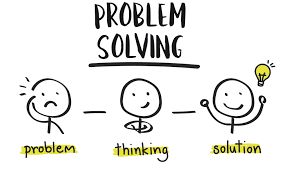One of the great joys of working with sellers and leaders is that, generally, we are people of action. A core part of our jobs is solving problems. Whether it’s helping our customers solve their problems and grow, or doing the same around our own performance or growth.
We tend to be proud of our ability to leap into action, responding to a customer’s query, or taking action on new growth opportunities.
As managers, our job is to solve problems. Again, we leap into action to address them, but too often that response looks like “Ready, fire, aim……”
Are we solving problems or responding/reacting to them?
With customers looking at changes, are we really focused on helping them understand and analyze the problem, or are we focused on responding with our solution to the problem?
Internally, do we really understand and analyze the problems or are we responding? For example, the solution to every anemic pipeline seems to be “more prospecting!” But often, we find that isn’t the solution!
Problem solving and problem responding are very different. Both are critical, but but one without the other is useless–or even, completely wrong.
As much as I hate parroting Simon Sinek, it’s important here. When we are helping our customers understand and address problems, or if we are looking at it for our own organizations. Rather than leaping to respond, it’s critical that we start with “Why…..” (yeah, it’s a little stomach turning).
Too often, when confronted with problems, we and our customers tend to ask, “What do we do, how do we respond?” Instead, we need to ask, “Why is this happening?”
Before we can address solutions, before we can take action and respond, we have to drill down, understanding the problem itself. “Why is this a problem? Why is this happening? How do we characterize and understand the problem? What is causing this problem? What it the impact of the problem? What happens if we choose to do nothing?”
Until, we, our customers and us, really understand the problem, we can’t begin to assess solutions to the problem. And any responses to the problem might not be the best.
The customer may have gone through much of this process themselves, though too many don’t. But if we don’t probe and understand what they’ve done, how they have characterized the problem, why it is a problem; we can’t position our response in the most impactful way.
Once, we and the customer, understand the problem we have the context in which to assess solutions and the ability to position the solutions with high confidence; “We understand why this is a problem, we understand what this problem is. Because of this, we have great confidence the path we are choosing to solve the problem is the best choice!”
We serve our customers, our people, and our organizations best when we focus on solving problems, and as a result of that process, responding to those problems. We will not have the impact we should through only responding to problems.

Leave a Reply